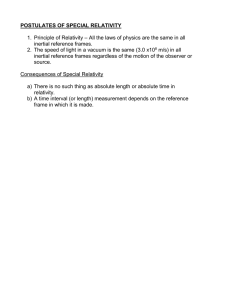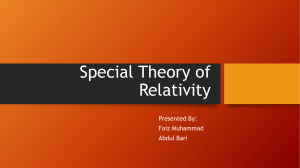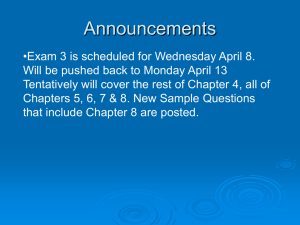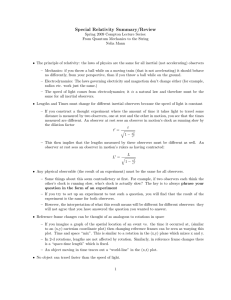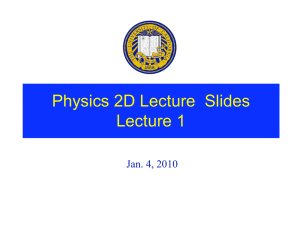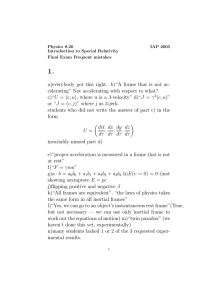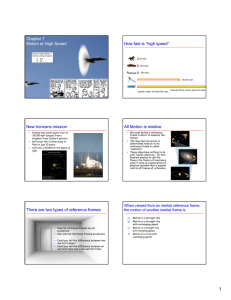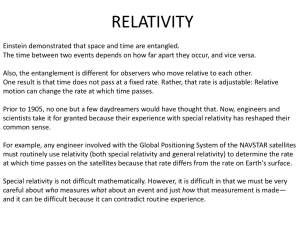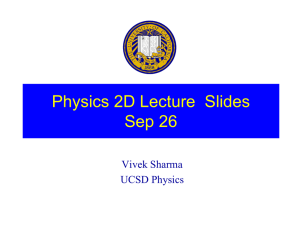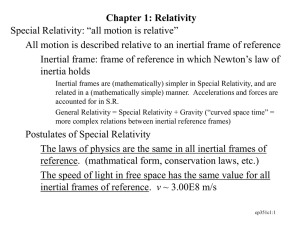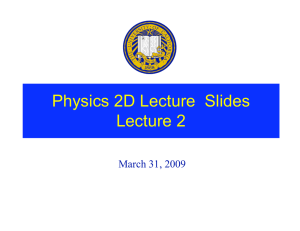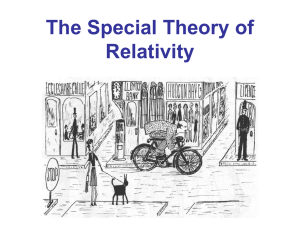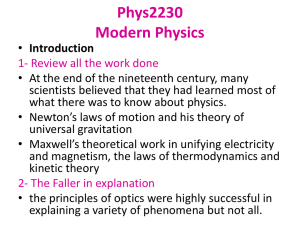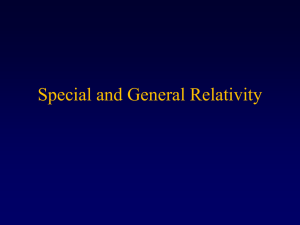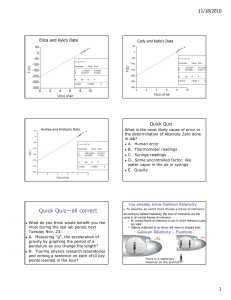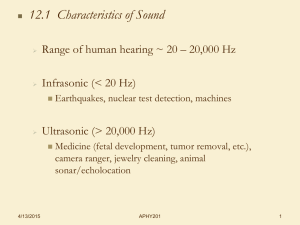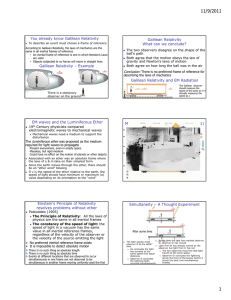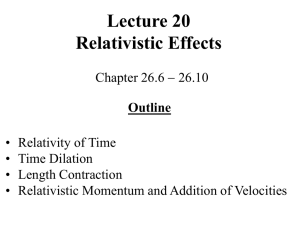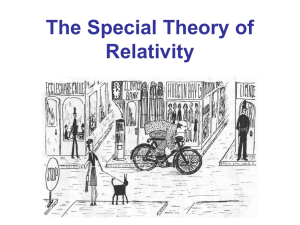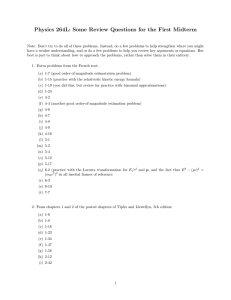doc
advertisement
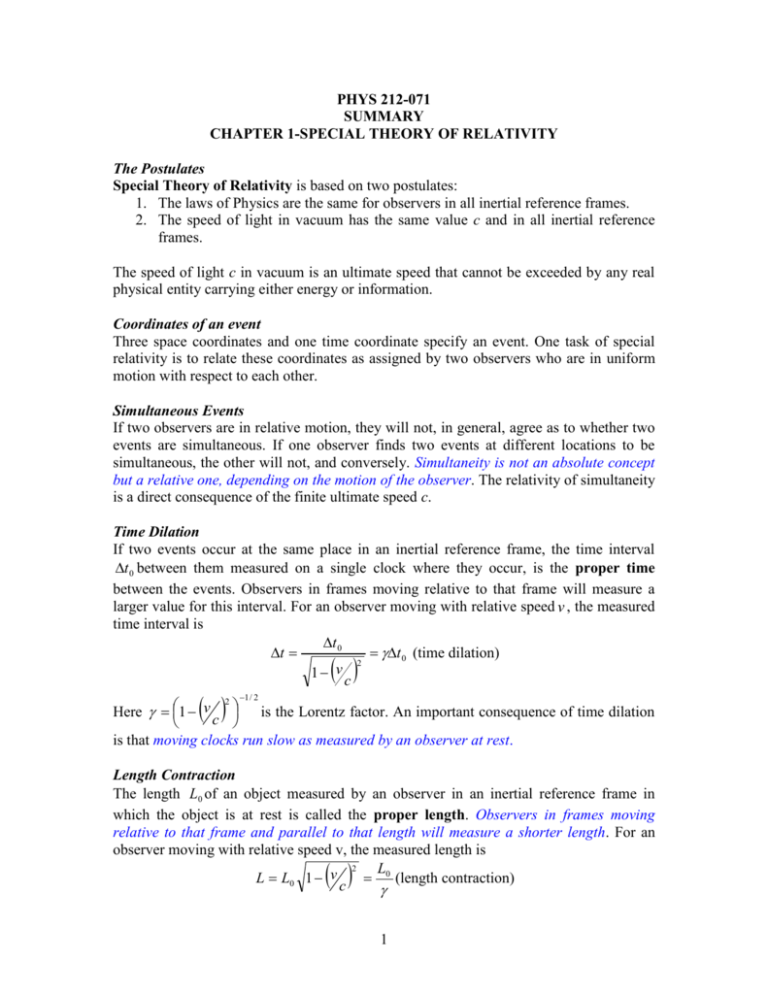
PHYS 212-071 SUMMARY CHAPTER 1-SPECIAL THEORY OF RELATIVITY The Postulates Special Theory of Relativity is based on two postulates: 1. The laws of Physics are the same for observers in all inertial reference frames. 2. The speed of light in vacuum has the same value c and in all inertial reference frames. The speed of light c in vacuum is an ultimate speed that cannot be exceeded by any real physical entity carrying either energy or information. Coordinates of an event Three space coordinates and one time coordinate specify an event. One task of special relativity is to relate these coordinates as assigned by two observers who are in uniform motion with respect to each other. Simultaneous Events If two observers are in relative motion, they will not, in general, agree as to whether two events are simultaneous. If one observer finds two events at different locations to be simultaneous, the other will not, and conversely. Simultaneity is not an absolute concept but a relative one, depending on the motion of the observer. The relativity of simultaneity is a direct consequence of the finite ultimate speed c. Time Dilation If two events occur at the same place in an inertial reference frame, the time interval t 0 between them measured on a single clock where they occur, is the proper time between the events. Observers in frames moving relative to that frame will measure a larger value for this interval. For an observer moving with relative speed v , the measured time interval is t 0 t t 0 (time dilation) 2 v 1 c 1 / 2 2 Here 1 v is the Lorentz factor. An important consequence of time dilation c is that moving clocks run slow as measured by an observer at rest. Length Contraction The length L0 of an object measured by an observer in an inertial reference frame in which the object is at rest is called the proper length. Observers in frames moving relative to that frame and parallel to that length will measure a shorter length. For an observer moving with relative speed v, the measured length is 2 L L L0 1 v 0 (length contraction) c 1 The Lorentz Transformation The Lorentz transformation equations relate the spacetime coordinates of a single event as seen by observers in two inertial frames, S and S’, where S’ is moving relative to S with velocity V in the positive x , x direction x x Vt y y z z V t t 2 x c Relativity of Velocities When a particle is moving with speed v in the positive x direction in an inertial reference frame S’ that is itself is moving with speed V parallel to the x direction of a second inertial frame S, the speed v of the particle as measured in S is v V v vV 1 2 c Relativistic Doppler Effect If a source emitting light waves of frequency f 0 moves directly away from a detector with relative velocity v , the frequency f measured by the detector is v c v 1 c 1 f f0 Momentum and Energy The definitions of linear momentum p , kinetic energy K , and total energy E that are valid at any possible speed are p mv K mc 2 1 E mc 2 mc 2 K Two additional energy relationships derivable from the above ones are pc 2 K 2 2Kmc 2 E 2 pc mc 2 2 2 2
